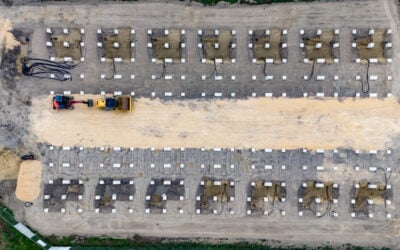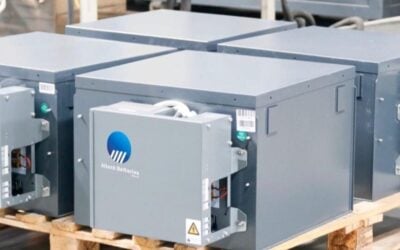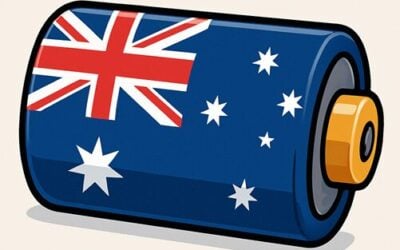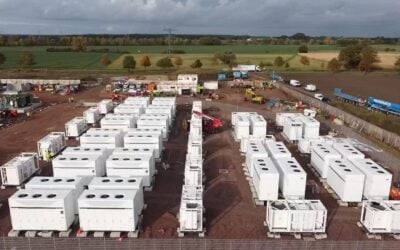Eicke Weber at Energy Storage Europe this morning
The use of energy storage to increase renewables integration and provide stability to the grid requires the removal of regulatory barriers, rather than increased direct funding, according to one expert on the German market.
Professor Michael Sterner, an expert on energy storage, echoed the general theme of the morning session at the Energy Storage Europe conference in Düsseldorf today when he said that changes in the way renewables, energy storage and related technologies can assist a move away from centralised energy networks and towards a more localised, lower emissions-based infrastructure needed to be recognised at the regulatory level, in Germany and elsewhere.
Sterner also said that for storage to work as a flexible resource for electricity networks, a number of storage technologies must be considered, as well as how they can interact with one another. In other words, he said, even the decentralised energy network of the future will require some “centralised” components – network expansion or upgrades, and energy storage.
Sterner, from the Technical University of Regensburg, was referring to the possibility of using power-to-gas and power-to-liquid storage and other storage technologies in conjunction with electricity storage in batteries.
Try Premium for just $1
- Full premium access for the first month at only $1
- Converts to an annual rate after 30 days unless cancelled
- Cancel anytime during the trial period
Premium Benefits
- Expert industry analysis and interviews
- Digital access to PV Tech Power journal
- Exclusive event discounts
Or get the full Premium subscription right away
Or continue reading this article for free
So-called “cross-sectoral energy storage” would, he said, open up more possibilities for the sector.
Professor Eicke Weber of Fraunhofer ISE, who is also head of the German energy storage association BVES and acted as conference chair for the morning session, described the transition to a low carbon energy system as “the biggest task of our generation“.
“The future energy system will look fundamentally different, with wind and solar at its core,” Weber said.
Weber said energy storage has received too little attention over the last 10 years or so, but that this picture is changing quickly. The cost of batteries is currently “much too high“, he said, but this too is changing.
Weber cited the example of California, where factors including the scaling up of deployment have brought the price of some batteries down to as little as US$150 per kilowatt-hour, while in Europe an equivalent battery could still cost as much as US$1,000 per kWh.
“The most important tool to bring down cost is the market,” Weber said, adding that he was very confident battery prices would fall significantly over the next two years.
Germany’s deputy prime minister, Sigmar Gabriel, was not in attendance to speak for the Federal Ministry for Economic Affairs and Energy as had been hoped, but instead his ministry was represented by another politician, Alexander Folz.
Folz acknowledged that a “profound change” is required in energy networks to assist Germany’s famous Energy Transition (‘Energiewende’) away from fossil fuels and nuclear. He agreed with the assessment of Sterner and others that storage’s greatest strength is as a flexibile resource for networks.
However, while various energy storage technologies can provide different services in different use cases, there is no “all-rounder” that can do it all, he said, citing the differing instances where, for example, mechanical storage such as pumped hydro could be used over batteries and vice versa.
While describing the general market environment for storage as “quite difficult” in the short term in Germany, Folz said, as electricity networks are currently fairly stable, the government has committed €200 million into energy storage across two federal ministries. The German government is expected to issue a whitepaper on the topic in June, according to Folz.
At present, while Germany does not have a special regulatory framework in place for storage, deeming it to be either a generation or demand control resource, it does enjoy certain privileges, such as exemption from the EEG surcharge and exemption from grid use fees.
European Energy: the ‘1,000-piece jigsaw’
Also appearing at the morning’s session was the principal advisor to the director-general for energy in the European Union, Tudor Constantinescu.
Constantinescu said there are several fundamental challenges facing the EU when it comes to energy. These include the fact that EU member states are dependent on some US$400 billion of energy imports each year, facing up to decarbonisation, keeping energy prices as low as possible, getting the energy mix of technologies right and making the energy sector attractive to investors as well as helping consumers keep the lights on at home.
While the changes in technology such as the falling price of renewables was clearly positive, he said, the challenge is that the energy sector is now a “1,000-piece puzzle” rather than a 20-piece puzzle.
According to Constantinescu, energy security in the EU is now “inseparable” from 2030 climate change targets as well as from energy policy framework.
Facing these challenges will require, he said, political commitment from member states as well as from the various institutions of the EU.
As the session was opened to questions from the floor, one attendee asked if it was contradictory that the EU is granting subsidies for nuclear on the one hand, and talking about increased deployment of renewables and storage on the other.
Constantinescu batted the question away by saying it was the right of EU member states to determine their individual energy generation mix.
However, Eicke Weber jumped onto the answer and said many discussions of nuclear versus renewables missed a fundamental point. Nuclear energy does not receive direct subsidies in the manner of a feed-in tariff such as might be received by renewable energy generation, he said. However, he argued, running nuclear power stations for 24 hours of the day since they cannot be shut down for three hours at a time, for example, means that in fact nuclear energy can cause “negative electricity rates” in a way that wind and solar are unlikely to do for any sustained period of time.





